Project Walkthrough: askFSDL
Project by Charles Frye. Published May 9, 2023.
View the project repository.
Interact with the bot on our Discord.
Chapter Summaries
SWE Tooling: make, precommit, etc
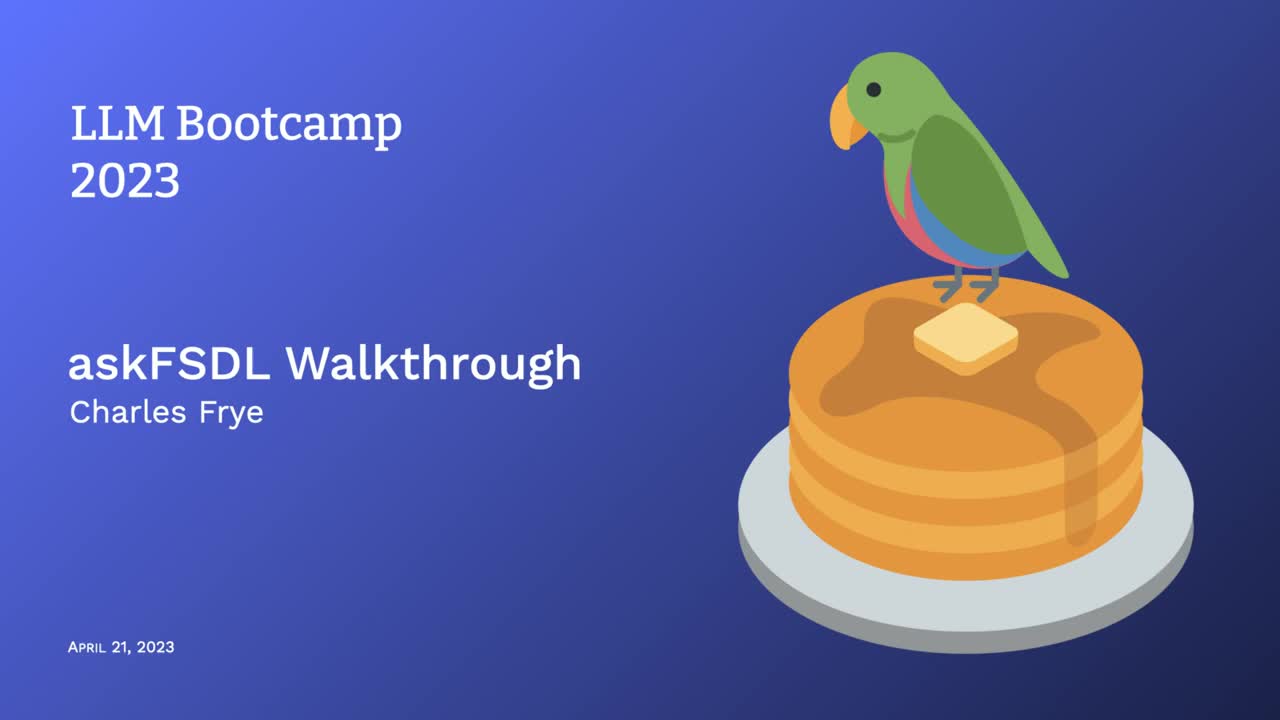
- Walked everyone through the code base for the Discord bot they interacted with
- Sourced question-answering over a corpus of information using Vector storage for retrieval
- GitHub repo available for this project, but may not be able to execute the code without accounts on all services
- Makefile created for easier project management, setting up environment and authentication, and running setup commands
- Incorporated software tools like pre-commit checks, black for Python auto-formatting, and rust-powered formatter
- Shell check tool useful for catching issues in bash scripts
Data Cleaning
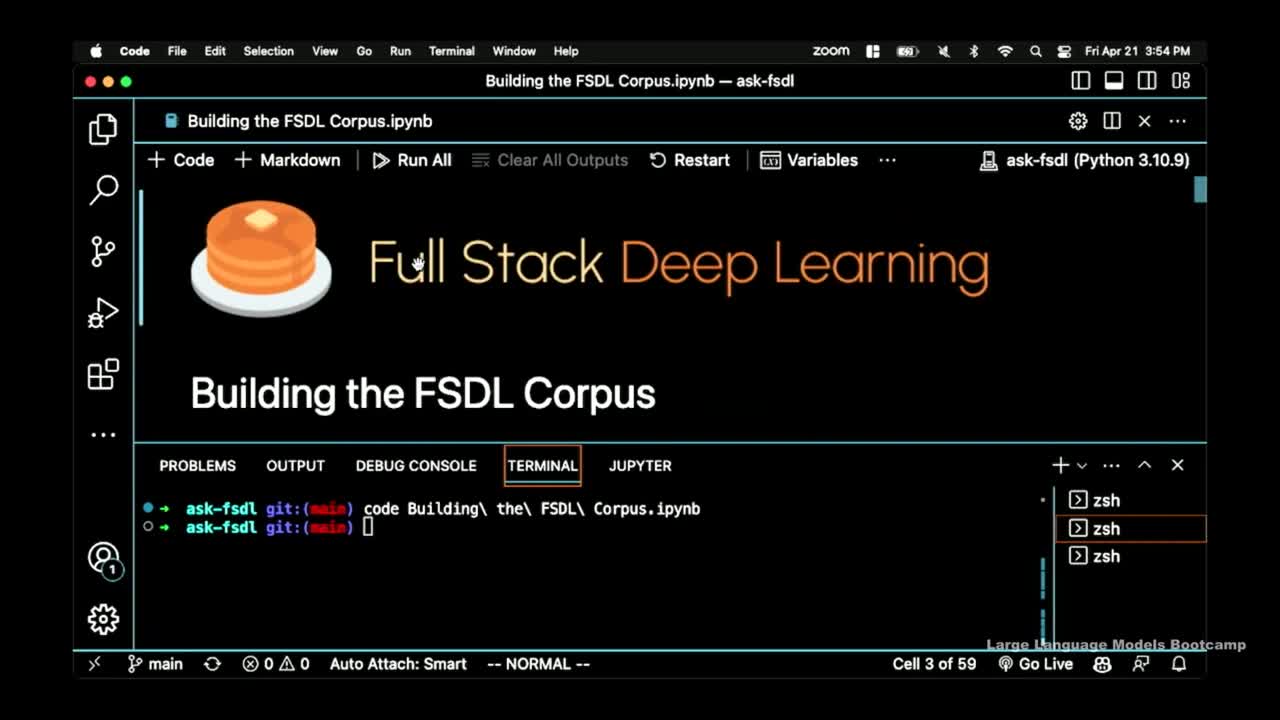
- Initial approach of scraping data and chunking into smaller pieces did not yield good results
- Improved results by spending time understanding the data and preserving the structure during processing
- Extracting textual information from other sources like images and YouTube videos can enhance the usefulness of language models
- Sometimes simple solutions to specific data sources and problems can greatly improve the quality of results
- The unglamorous work of getting to know the data and writing code to manage it properly can result in big dividends for language model applications
Infrastructure: Modal
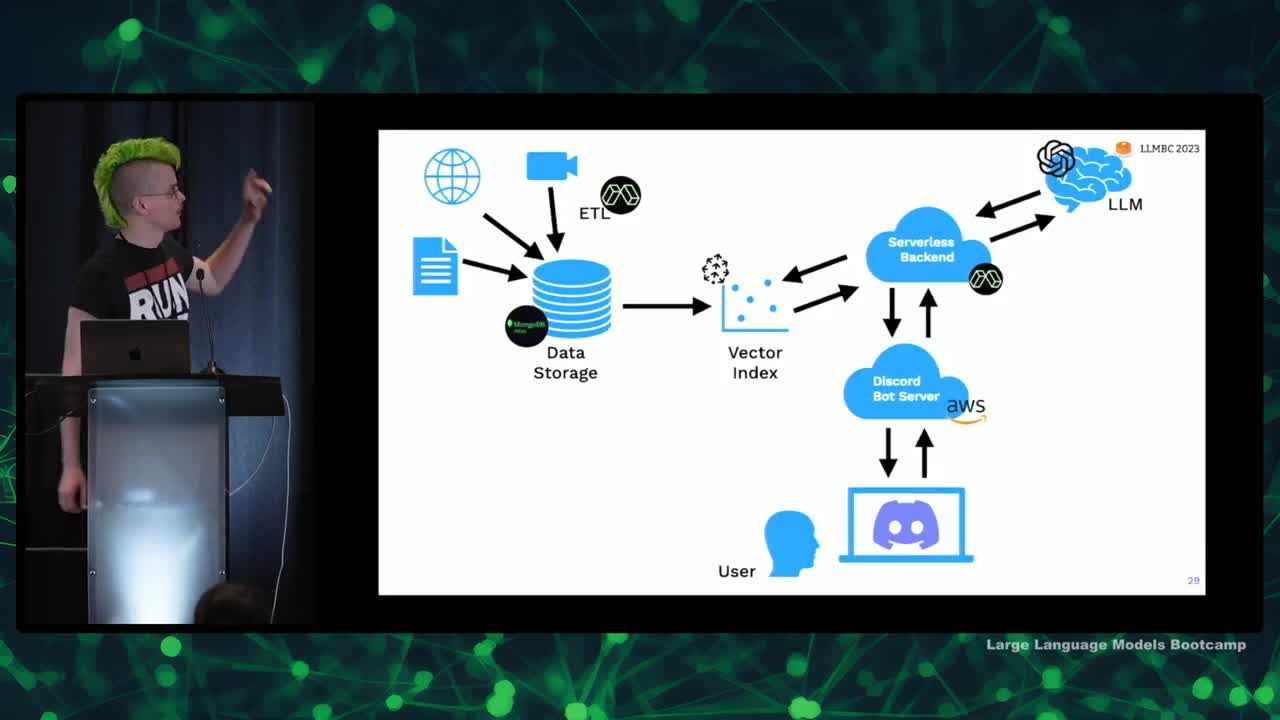
- Discussed the ETL component of extracting, transforming, and loading data from various sources
- Discussed using Python packages for data transformation and addressing dependency issues with tools like pre-commit
- Explained the benefits of the modal component in creating lightweight virtual containers for different tasks
- Modal containers are fast and efficient, aiding in quick development cycles and allowing for containerization without the pains of traditional Docker images
- Modal also allows for the creation of serverless applications with auto-scaling and resource management
- Debugging and local development can be done through the interactive mode by connecting to a container running on modal
- showModal provides an interface for tracking application activity, utilization, and resource allocation, making it a versatile tool for various projects
Frontend: Gradio & Discord
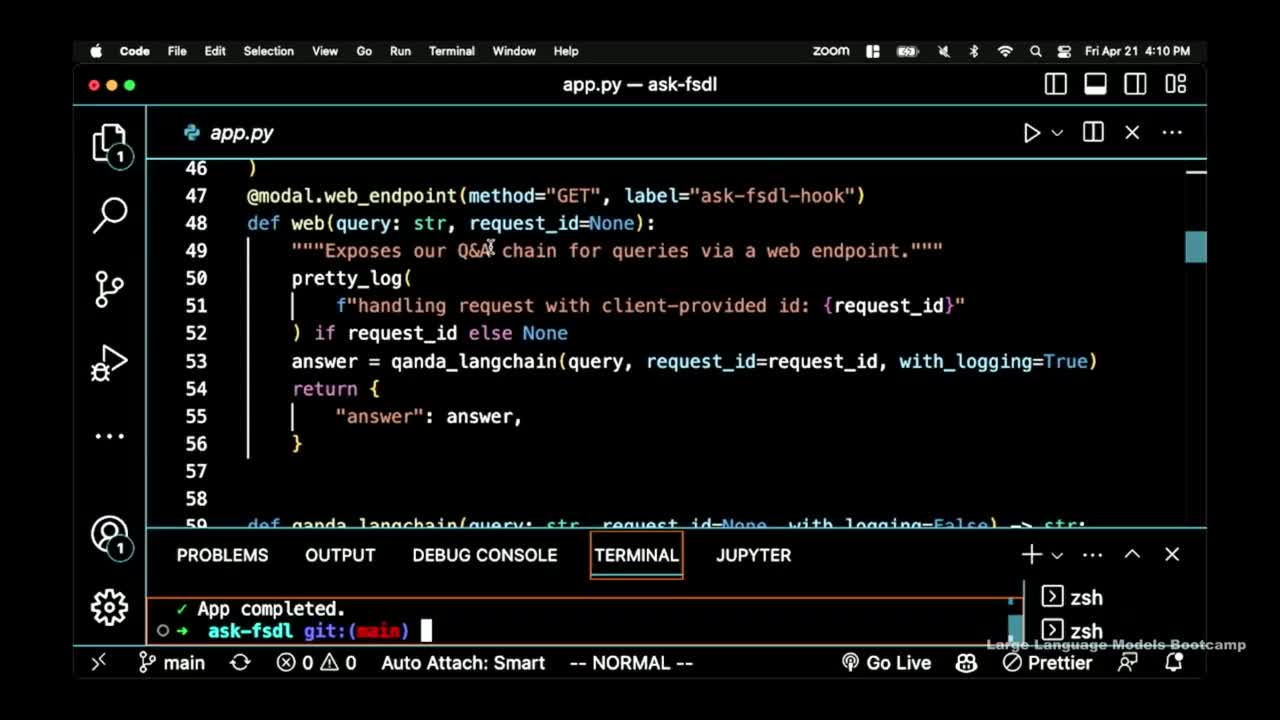
- Introduced Gradio user interface, allowing users to create interfaces in pure Python
- Gradio UI is flexible, supported by Hugging Face, and rapidly adopting machine learning features
- Examples of Gradio UI use include Alpaca, Flamingo, and Dolly mini
- Gradio UI is easy to set up, portable, flexible, and comes with an API with OpenAPI spec
- Discord bot integrated with Python library Discord.py; alternative library Interactions.py is also available
- Gradio UI is built on FastAPI for asynchronous Python web service
- Application mainly runs on the model's infrastructure in containers, serving traffic as needed
Embeddings & ETL
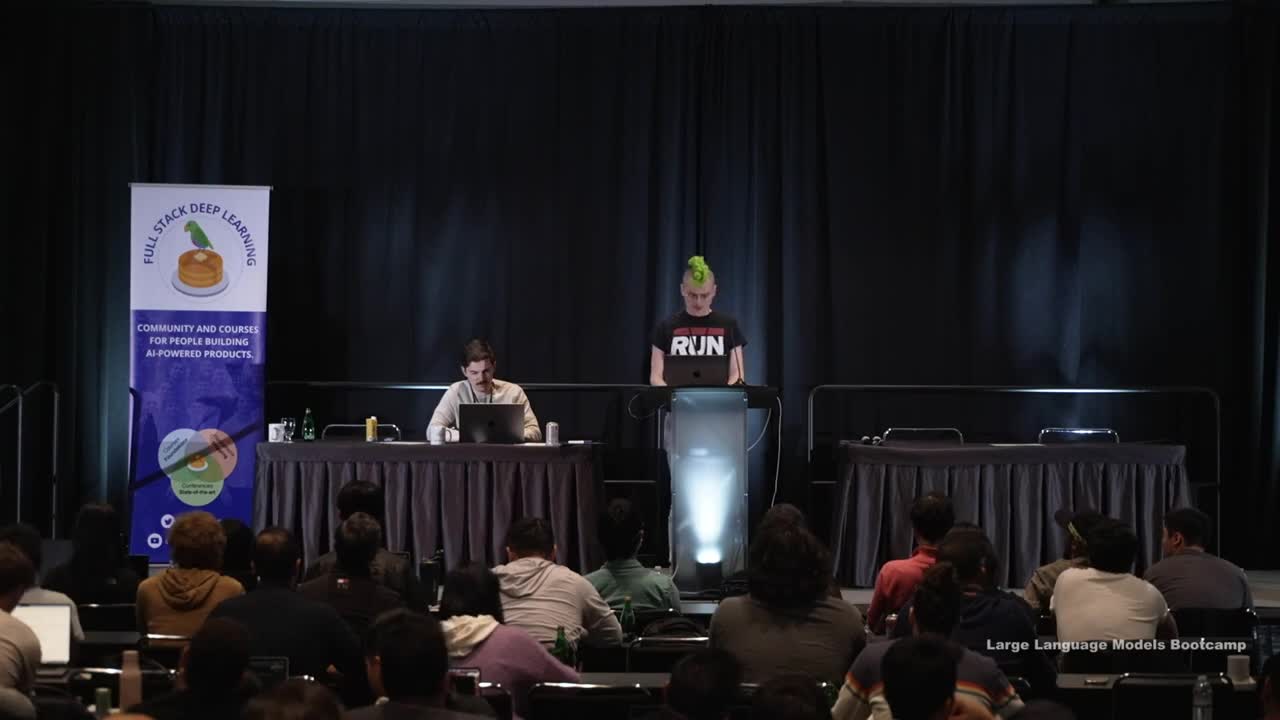
- Used OpenAI's ada002 model to generate embeddings, which are much cheaper than generation endpoints
- Currently using a vector index for data storage, but considering adding additional types of search
- Discussed processing PDFs in a previous lecture, mentioned using local code to extract URLs and using a map function with controlled concurrency
- Retrieval results are put into the zero-shot problem using an F-string template in LangChain's prompt template
- Compared LangChain to Hugging Face Transformers Library as a framework and mentioned that their code is often simple, but valuable for its interface and compatibility with other tools
Monitoring & Improvement: Gantry
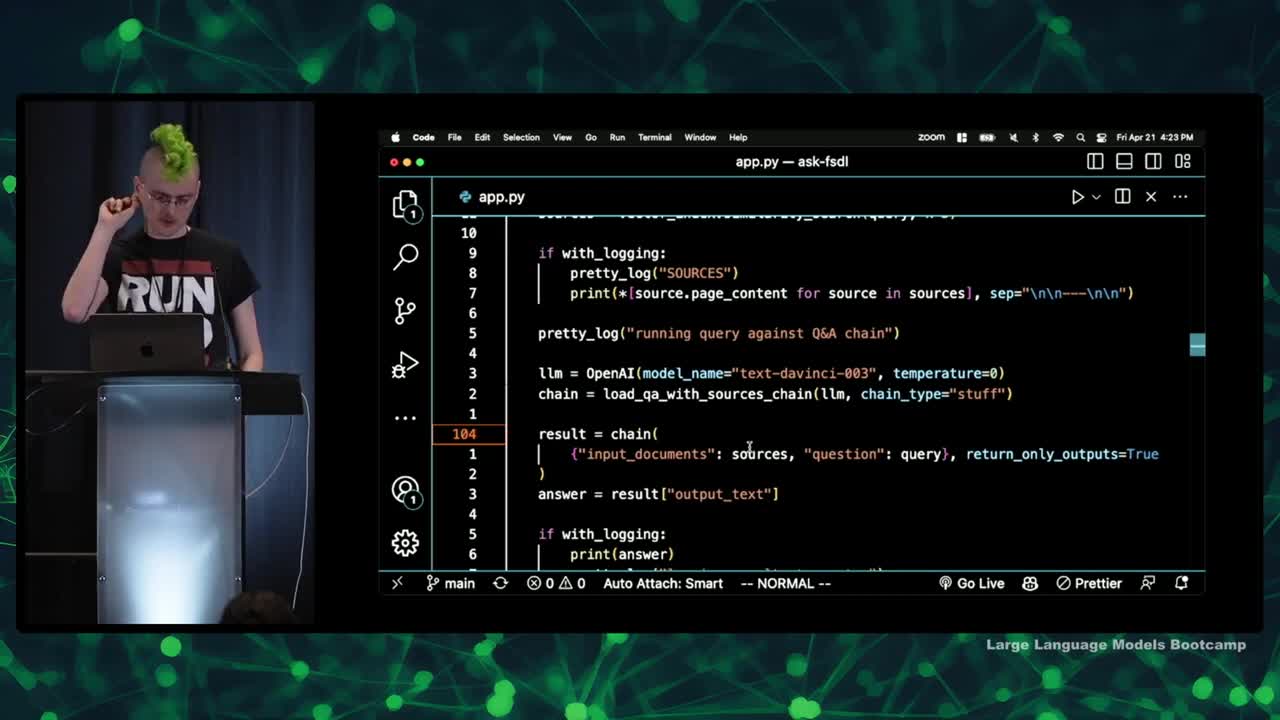
- Top three challenges in bringing the spot to the next level: improving retrieval, improving the quality of model outputs, and identifying a solid user base.
- Using tools like Datadog, Sentry, Honeycomb, and Gantry for handling web services, logging, and monitoring model behavior.
- The same principle of tracing and monitoring applies to both ML-powered apps and LLM-powered apps.
- Gantry provides a useful service for tracking and enriching logged data, including toxicity checks and other natural language-based or numerical analyses.
- Using language models to check on the performance and outputs of other language models.
- Contributing to the development of the tool as a teaching and learning application is open and encouraged.
We are excited to share this course with you for free.
We have more upcoming great content. Subscribe to stay up to date as we release it.
We take your privacy and attention very seriously and will never spam you. I am already a subscriber